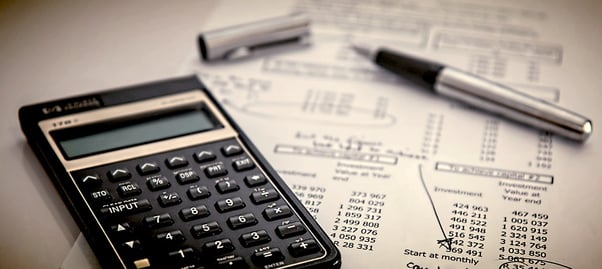
What gets measured gets managed.
So, if you want to improve the management of your business and/or profitably, manage its growth, you’ll need to get to grips with your numbers and establish some useful metrics (measures of how you are doing).
To do this well you’ll need to get comfortable with a few key financial concepts.
Finance has a very distinctive language and you will come across the following 5 key terms when you are trying to understand sales and profitability:
1. Sales Growth
This measures how much your sales (i.e. how much you have invoiced or taken in cash from your customers, not including VAT) have gone up in percentage terms within a set period (i.e. a month, a year etc.).
For example, if sales in the preceding 12 months had been £200,000 and in the latest 12 months they were £206,000 we can say that the sales growth equals 3% (206,000-200,000/200,000).
Is 3% sales growth a “good” number? This is a question which requires you to examine a few relatives (by which I mean some other numbers and not your uncles and aunties!). Let’s say the inflation rate is 5%, then 3% sales growth would represent a decline in real terms. What if your major competitor grew by 20% over the same period? Then you would have lost market share and it would look bad.
If, however, there is little or no inflation, your market is in decline, and all your competitors have recorded declining sales, then 3% growth looks like a fantastic result.
2. Gross Profit & Gross Profit Margin
This is a VERY important number, it measures profitability at the most basic level - i.e. are you able to sell stuff for more than it costs you to provide it? (if not what are you doing it for!!).
As a basic example, let’s assume you run a pub and sell one beer. You charge £3.60 per beer, you take £3.00 of that sale (sadly, the other 60p is VAT and belongs to HMRC). You buy a 72-pint barrel of beer for £72.00 (plus VAT which we can ignore because you are able to reclaim it from HMRC), meaning each pint of beer costs you £1.00. Therefore, your gross profit per beer sold is £2.00 (sale £3 minus cost of sale £1) and your gross margin is calculated as ‘Gross Profit/Sales Revenue’ which is 66.66% (£2/£3).
Total gross profit, therefore, depends on how many pints you sell, so if you sold 150,000 pints in a year your total Gross Profit (GP) would be £300k.
3. Mark-up and Margin
It is important at this point to recognise the difference between mark-up and margin. Getting these confused is a very common and potentially expensive mistake. It is easy to think that if you buy something for £1 and sell it for £1.50 that you have made a 50% profit – but this is incorrect. In fact, you have “marked up” the purchase cost of £1 by 50% to get to a price of £1.50, but your actual gross margin is only 33.3% (50p/150p). Anyone with responsibility for setting prices MUST understand this crucial difference. Here is a very simple table to highlight the difference:
|
MARK-UP PERCENTAGE |
IMPLIED GROSS MARGIN |
|
10% |
9.1% |
|
20% |
16.7% |
|
30% |
23.1% |
|
40% |
28.6% |
|
50% |
33.3% |
|
60% |
37.5% |
|
70% |
41.1% |
|
80% |
44.4% |
|
90% |
47.4% |
|
100% |
50% |
4. Net Profit
Net profit is what is left after all of your costs have been deducted from all of your income. Using the example above, where your pub had made a £300k gross profit, whether or not your pub was actually profitable would then depend on how much you spent on overheads (bar staff, rent, rates, mortgage interest, light, heat, licenses, insurance etc.). If total overheads were less than £300k you would have made a net profit (on which you’d need to pay tax!), but if they were greater than £300k you would have made a net loss.
If overheads came in at exactly £300k you would have achieved:
5. Break-even
This is a commonly used term, which is particularly valuable for examining new projects or business lines or evaluating a start-up business. The point at which the business/project moves from making a loss to making a profit is known as the break-even point. You might hear questions like “how long until we hit break-even?”; “what’s the break-even level of sales?”; “how far are we from break even?”; “how much will we lose before reaching break-even?” etc. Clearly the further you have to go in terms of sales or time, the more you will need to put in to support the business until it starts generating profits.
Thanks to Andy Haworth for providing this blog post.
Andy is the Programme Director of the Essential Management and Finance Fundamentals programmes here at Cranfield University. He is also a Lecturer and Counsellor on the Business Growth Programme (BGP).


